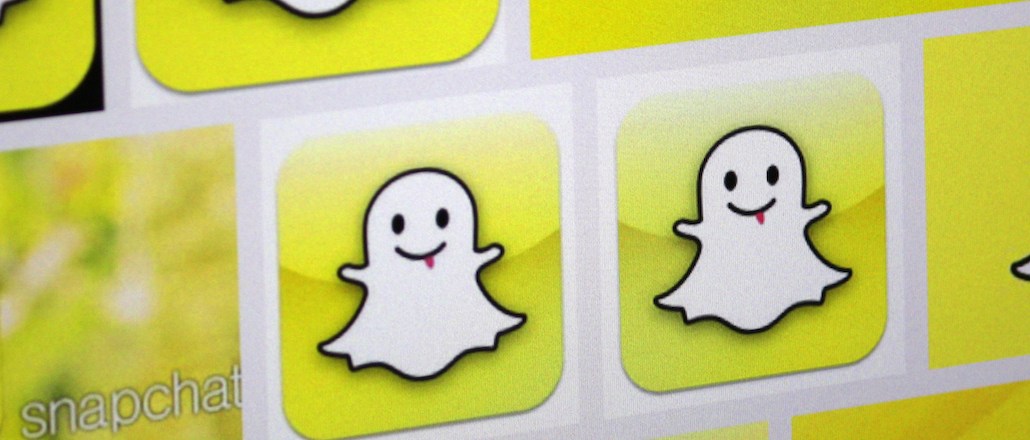Register by Jan 13 to save on passes and connect with marketers from Uber, Bose and more

As clients’ desire to cozy up to the youthful Snapchat audience increases, agencies are mastering the platform with varying degrees of success.
Clearly no longer just a channel for sexting, some are using it as a substitute to reality TV, while others are struggling to get past the impenetrably abstract user face.
Here’s how five agency execs are using Snapchat at home and at work.
Rob Scotland, business strategy director, Leo Burnett
Rob Scotland (Snapchat handle: LDNVKNGRob) is more of a consumer than a broadcaster for now. After renewing his interest in the platform in 2014, he was taken with how versatile Snapchat is. “The joy of Snapchat is that it can be used in so many ways. Snapchat Stories, Snapchat Faces, Geo Tag Filters. For me, it’s become my version of curated reality TV. Recent highlights include, rapper Stormzy geeking out over his love for Adele, DJ Khaled with his “22 days of nutrition,” UFC (Ultimate Fighting Championship) sharing behind-the-scenes content … it’s better than TV most of the time.”
It’s only a matter of time before more, older people join Snapchat, he said, as campaigns form Burberry proving that it’s not just the preserve of the young. When that time comes, Snapchat’s core younger audience will probably have moved elsewhere.
 Will Hayward, chief commercial officer, Dazed
Will Hayward, chief commercial officer, Dazed
Will Hayward, a Snapchat fan and the former BuzzFeed vp of Europe, has only one complaint about the platform: It’s too bad more people aren’t on it. Now it’s his preferred messaging platform, although it took him a couple of years to figure out that it wasn’t just an annoying version of Whatsapp.
“I was using it once to talk with someone in advertising about a mutual contact, and we started joking and also being super honest — and I realized we were messaging in a really clear and fun way that I would only ever do offline,” said Hayward (mrwillhayward).
“Evan Spiegel has said that online communication is fundamentally stunted by the fact that everything is recorded. Making delete the default makes everything more fun and honest.”
The complicated user experience is a common complaint with Snapchat Gen Xers, but that’s all part of the master plan, he said. “It keeps the olds off. I slipped through.”
https://www.youtube.com/watch?v=08oOJuuceg4&feature=youtu.be
Bree Throssell, social manager, Iris
Throssell was sold on the prospect of being able to share moments instantly with friends and family after moving from Australia to London. An “unashamed early adopter,” she joined in 2012, shortly after Snapchat was released. Mostly she uses it for a private messaging and as a personalized and unchoreographed YouTube channel.
Closer in age to the millennial demographic, she was well suited for Snapchat. Her expertise is filtering upwards — Throssell is now coaching one of Iris’ co-founders, Adam Wright, to be a seasoned pro on the platform. This training, however, has given him access to her weekend Stories, which, he says, is “probably not the smartest move.”
Other platforms have not exploited the playful creative side as well as Snapchat. “Who doesn’t want to see themselves with super powers blowing things up with a single glance?”
 Nathan McDonald, co-founder & global managing partner, We Are Social
Nathan McDonald, co-founder & global managing partner, We Are Social
Joining in 2012 after having been shown the app by a colleague in the pub, Nathan McDonald uses Snapchat for sending quick, informal updates one-to-ones with family and friends without worrying about the composition or quality. He also uses Stories every few days to catch up with global colleagues. McDonald (nathanmcd0nald) jumps on new platforms as they launch in order to understand them for clients and predict behaviors.
“At first, I thought it was an interesting response to the problem of ‘permanence,’ and for a while, people assumed it was for sexting.” Instead, Snapchat is about multimodal communication, said McDonald. “Essentially it’s enhanced chat without the fear that your every word could come back to bite you.”
Phil Hawksworth, technology director R/GA London
Not everyone has fallen for the seductive charms of Snapchat though. Hawksworth (philhawksworth) joined a couple of years ago to keep in touch with family in San Francisco, but he has been flooded with pictures of cats and funny faces.
“I’m mostly frustrated with it to be honest. Because the content is ephemeral, it means I usually see just goofy and random stuff. I’m fine with a bit of that, but I like something I understand from time to time.” The interface he finds “impenetrably abstract” too.
“I feel like my granddad trying to set the clock on his VHS,” he said. “It seems I got old.”
More in Media

Future starts to sharpen its AI search visibility playbook
Future is boosting AI search citations and mentions with a tool called Future Optic, and offering the product to branded content clients.

Digiday’s extensive guide to what’s in and out for creators in 2026
With AI-generated content flooding social media platforms, embracing the messiness and imperfection of being human will help creators stand out in the spreading sea of slapdash slop.

Media Briefing: Here’s what media execs are prioritizing in 2026
Media executives enter 2026 weathered by disruption, but refocused on AI revenue, brand strength and video and creator opportunities.





